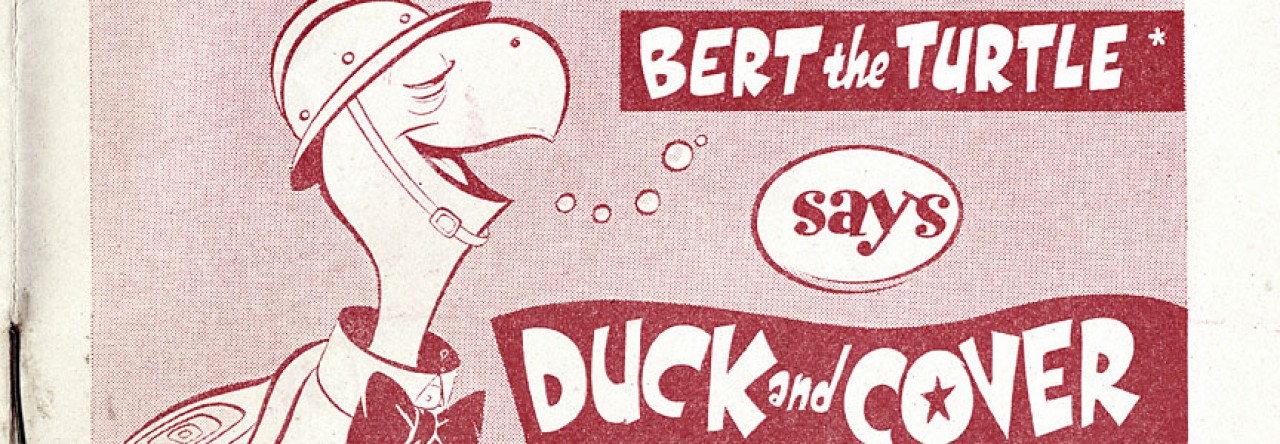Throughout the Cold War, the United States developed numerous ideas for nuclear weapons: some good, and many that were bad. However, in the context of the Cold War, it was feared that the United States would not have a sufficient number of troops to fight off a Soviet invasion. As a result, tactical nuclear weapons (TNWs) were viewed as the only thing that could “even the odds” against columns of advancing Soviet tanks. In addition, many of these nuclear weapons were developed in the 1950s and 1960s, during a time of great interservice rivalry, which resulted in a “nuclear good and plenty.”[1] Leaders in the Army and Navy raised the argument that the Air Force should not be the only service branch with nuclear weapons. In the new nuclear battlefield, some predicted that the Navy would become obsolete and large ground forces would as well.
In this context, the Army developed weapons such as the Davy Crockett recoilless rifle, the Special Atomic Demolition Munition (SADM) and Medium Atomic Demolition Munition (MADM) and “Atomic Annie,” a 280mm artillery gun. All of these weapons were actively deployed in Germany and Korea to stop massed Soviet tank formations in conjunction with each other to create massive roadblocks of destroyed tanks. The “Davy Crockett,” colloquially known as a “nuclear bazooka,” was the smallest nuclear weapon that ever entered American service. Possibly one of the most bizarre weapons to emerge out of the Cold War, it had a yield of 10 to 20 tons (“tiny” in comparison to other nuclear weapons, but “huge” when compared to conventional weapons). It had a range of 2 to 12 miles and was both man-portable and able to be transported on the back of a Jeep (See “How Big is A Kiloton?” for an image of the Davy Crockett.)[2]
The SADM, often labeled as a “backpack nuke,” was planned to be carried by Special Forces teams and planted at an airfield or an industrial target. In theory, these soldiers would be able to escape the blast, however, the carriers realized that the employment of the SADM was a one-way trip. The MADM was a nuclear land mine (really!) which was planned to be placed in Europe to destroy Soviet armored columns.[3]

Finally, “Atomic Annie” was a scaled up 240mm artillery gun (the largest in the U.S. arsenal) that could fire a 15 kT shell a distance of twenty miles. Officially named the “M65 Atomic Cannon,” 20 were built by the U.S. Army, but only one live test fire was ever conducted in 1953. Additionally, due to the advancing technology of missiles and rockets, “Atomic Annie” was quickly made obsolete. Despite this, the M65 cannon was deployed to Korea and Germany in a clear show-of-force to the Soviet Union. [4]
In addition, the primary fear of the U.S. military during the early years of the Cold War was that American air defenses were insufficient to protect against massed formations of Soviet bombers. Similar to the fear that land forces would be insufficient to deter a Soviet armored thrust, many feared that current air defenses would be unable to defend against waves of incoming bombers. In response, the Army developed the Nike Hercules surface to air missile, which could carry either a 2, 20 or 40 kT warhead to be fired into massed formations of bombers.[5]
During this time, the Navy also developed their own low-yield nuclear weapons to be deployed on ships. The Navy’s primary nuclear weapons included nuclear depth charges, named the Mk-101 “Lulu” and a nuclear anti-submarine rocket (ASROC). Both the nuclear depth charge and the ASROC had yields of 11 kT and 10 kT, respectively. After launch, the weapons would sink to a pre-determined depth and detonate. However, it was soon realized that the nuclear depth charge lacked a safety device-if it were to accidentally roll off a ship, it could detonate when it sank to the pre-set depth.
Finally, while the Air Force maintained an arsenal of nuclear weapons for missiles and bombs, it also introduced the AIR-2 Genie nuclear tipped unguided rocket in 1957. Similar to the Nike Hercules, it was intended to be fired into Soviet bomber formations. To illustrate the safety of the Genie rocket, “Operation Plumbbob John” was conducted on July 19, 1957. In a highly publicized event, Air Force personnel stood underneath the detonation of the 2 kT nuclear warhead.[6]
If these ideas seem ridiculous, they were. It soon became apparent in testing that many of these weapons were greatly inaccurate and the resulting radiation would be extremely high, so much so that the troops firing it would not be able to be protected or escape. However, these weapons were viewed as the only solution that would present American forces with the slightest chance of survival in a Soviet attack.
[1] Paul Bracken, The Second Nuclear Age (New York: Henry Holt and Company, 2012), 47.
[2] L. Douglas Keeny, 15 Minutes: General Curtis LeMay and the Countdown to Nuclear Annihilation (New York: St. Martins Press, 2011), 280.
[3] Eric Schlosser, Command and Control: Nuclear Weapons, the Damascus Accident and the Illusion of Safety (New York: Penguin Books, 2013), 416.
[4] Schlosser, 268.
[5] Thomas B. Cochran, William M. Arkin, and Milton Hoenig, Nuclear Weapons Databook Volume I: U.S. Nuclear Forces and Capabilities (Cambridge: Ballinger, 1987), 45.
[6] Commission for the Comprehensive Nuclear Test Ban Treaty Organization, “Five at Ground Zero,” CTBTO.org, 2010, http://www.ctbto.org/specials/testing-times/19-july-1957-five-at-ground-zero/.
